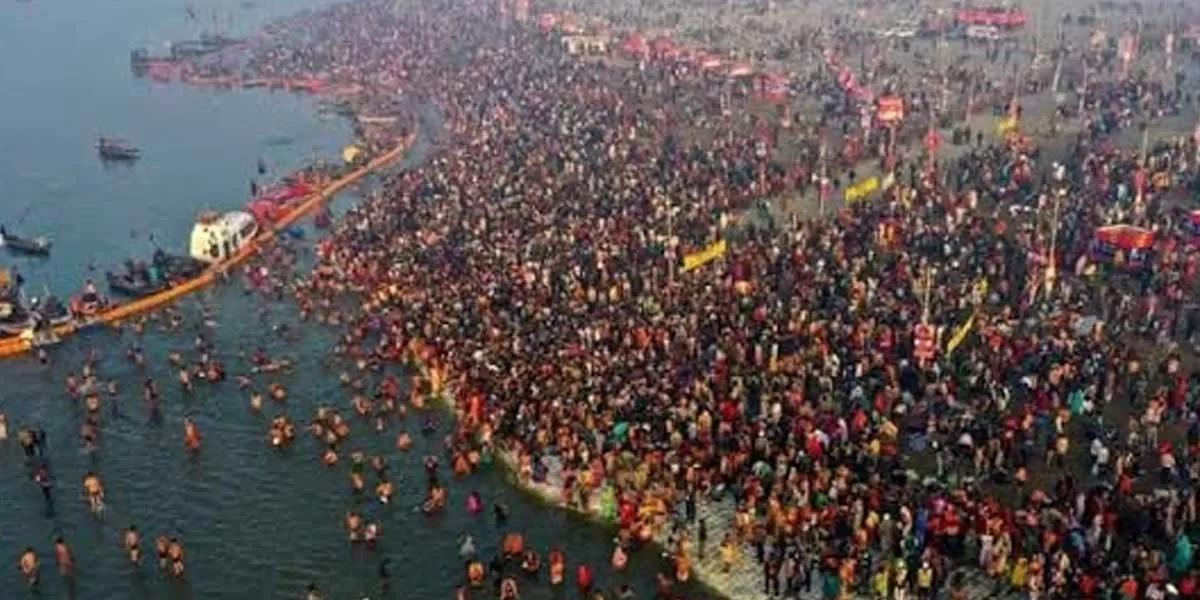As the sun rises over the sprawling expanse of the Maha Kumbh Mela, the sheer magnitude of the event comes into focus. Imagine a sea of humanity, each individual contributing to the vibrant mosaic of faith and devotion. In this awe-inspiring spectacle, the silent heroes are the advanced waste management technologies working tirelessly behind the scenes. Like unsung conductors of a grand symphony, these innovations ensure that every note of cleanliness and hygiene is perfectly in tune.
From high-tech sewage treatment plants to natural purification ponds, each element plays a crucial role in maintaining the sanctity of the environment. This harmonious blend of tradition and technology not only preserves the spiritual essence of the Maha Kumbh but also sets a benchmark for future large-scale gatherings worldwide.
Imagine a bustling city that springs up overnight, teeming with millions converging for a grand spiritual gathering. A 45-day religious event that attracts an estimated 40 crore visitors. The logistical challenge of managing the waste generated each day is staggering. The authorities, however, are not daunted. They have enlisted the help of Indian Space Research Organisation and Bhabha Atomic Research Centre (BARC), two of India’s premier scientific institutions, to tackle this Herculean task.
The scale of waste generation at the Maha Kumbh is mind-boggling: nearly 16 million litres of faecal sludge and 240 million litres of greywater every day, and massive solid waste from millions of pilgrims. Managing this requires sophisticated solutions, and that’s where advanced technologies come into play.
One of these is the Hybrid Granular Sequencing Batch Reactor (hgSBR), developed through an ISRO-BARC collaboration. Imagine a high-tech washing machine, but instead of cleaning clothes, it treats sewage. This technology will be used at three prefabricated Faecal Sludge Treatment Plants (FSTPs), efficiently processing human waste and ensuring that the environment remains clean and safe.
Another innovative technique is Geotube Technology. Think of it as a giant tea bag which holds and treats large volumes of liquid waste. This technology helps in the containment and treatment of waste, ensuring that only clean water is released back in the environment.
Bioremediation is another fascinating approach being used at the Maha Kumbh. Picture a series of large ponds, each teeming with beneficial microorganisms that break down pollutants and cleanse the water. This natural and environment-friendly method will be applied to greywater collected in approximately 75 large ponds, ensuring the water is treated effectively and safely.
The Uttar Pradesh Government has shown significant commitment to waste management, with a total Maha Kumbh budget of Rs 70 billion. Rs 16 billion is dedicated to waste and water management, and Rs 3.16 billion is specifically allocated for open defecation free (ODF) infrastructure. This financial and infrastructural commitment underscores the importance of maintaining hygiene and sanitation during the event.
The technologies being deployed aim to mitigate several critical environmental concerns. They prevent river water contamination, reduce potential health risks from waste and sewage, and minimise the ecological footprint of the massive gathering. The operational strategy for waste management includes reducing manual handling to a minimum, emphasising source-level waste segregation using advanced technological interventions, and implementing strategic disposal mechanisms.
Additional preparatory measures include the installation of 1.45 lakh portable toilets, the deployment of a number of sweepers for continuous cleaning, the establishment of sufficient medical facilities, and a comprehensive waste collection and management infrastructure.
These advanced technologies represent a paradigm shift in managing large-scale religious gatherings. They offer environmentally sustainable waste management, reduced health risks, minimal ecological disruption, and efficient resource utilisation. Maha Kumbh 2025 stands as a testament to India’s technological prowess in managing complex logistical and environmental challenges associated with massive religious congregations. It stands as a shining example of how technology and tradition can come together to create a cleaner, healthier future for all.
- By Dr Jitendra Singh
(Dr Singh is Union Minister of State (Independent Charge) Ministry of Science and Technology and Ministry of Earth Sciences, Minister of State in Prime Minister’s office, Ministry of Personnel, Public Grievances and Pensions, Department of Space and Department of Atomic Energy)





















